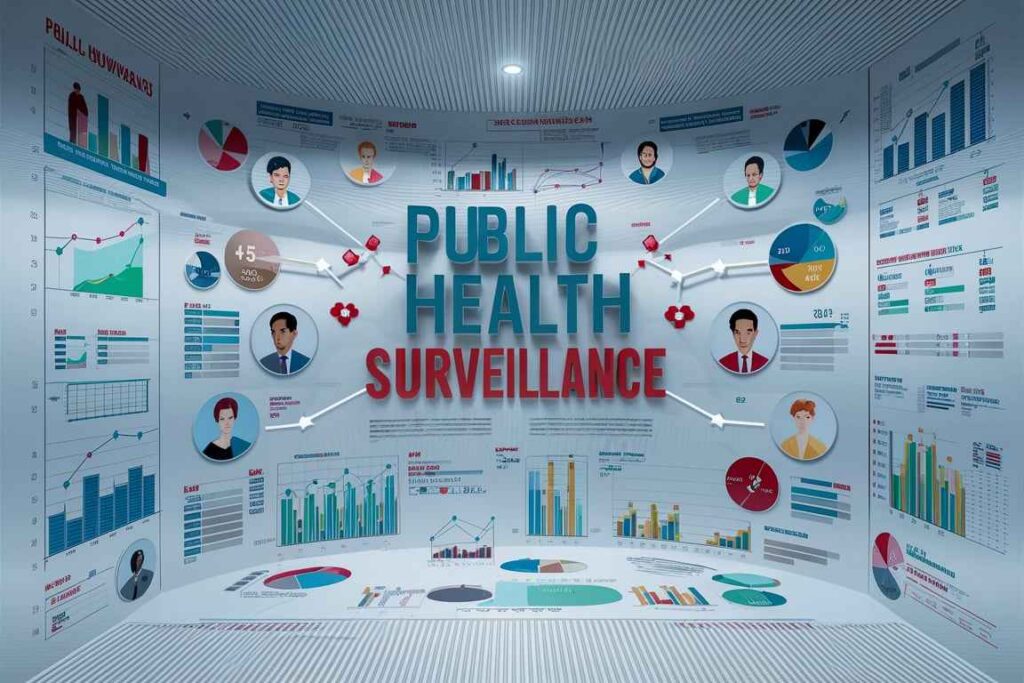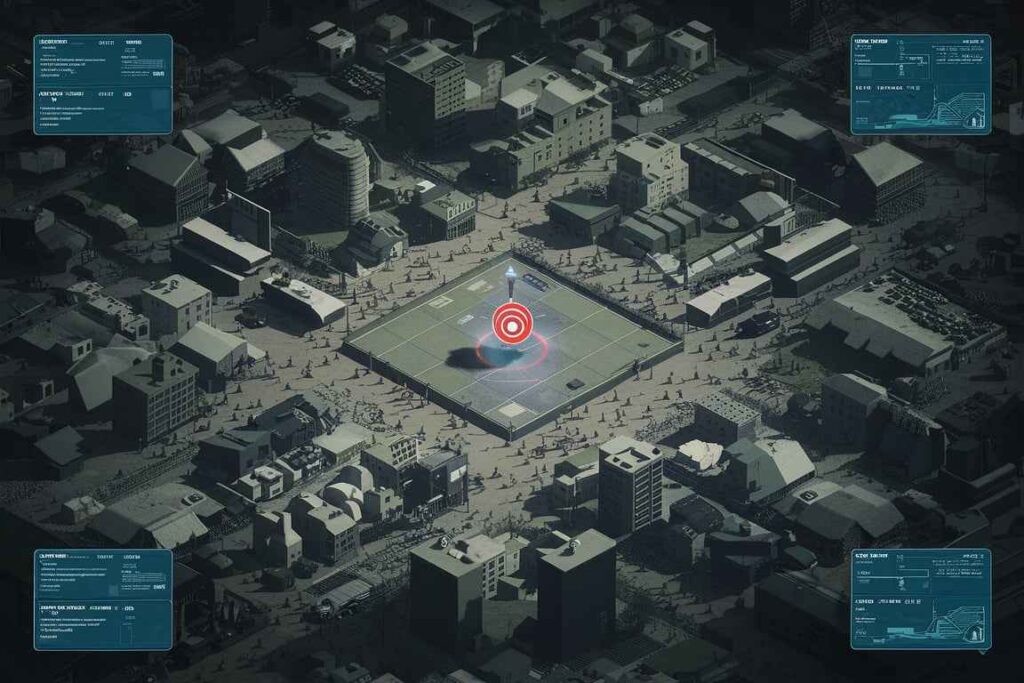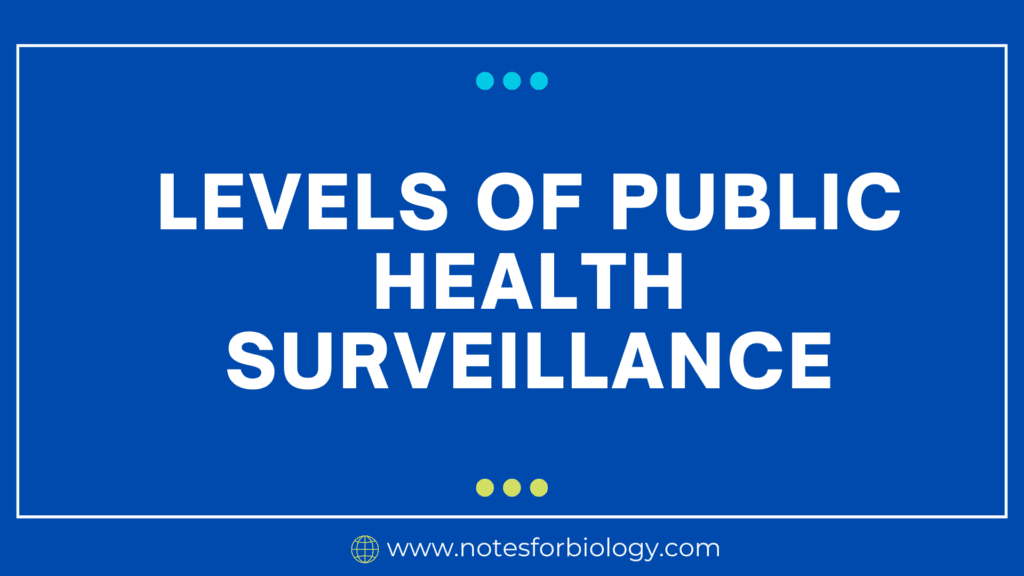Public health surveillance is a fundamental aspect of public health practice that involves the systematic collection, analysis, and dissemination of health data to guide public health actions. It operates at various levels, each with its own set of roles and methodologies, ensuring a comprehensive approach to monitoring and improving public health globally, nationally, regionally, and locally.
Table of Contents
Public Health Surveillance
Public health surveillance is a crucial component of monitoring and responding to health threats in a population. It involves systematic collection, analysis, and interpretation of health-related data to inform public health action. There several levels of public health surveillance that prompt different actions
Several Public Health Surveillance Level

1. Global Surveillance

Objective:
Detect and respond to foreign health threats quickly.
Coordinate efforts and resources between countries.
Ensure that countries follow international health laws to prevent and contain outbreaks.
Key Organizations:
The World Health institution (WHO) is the principal global health institution in charge of coordinating worldwide health operations and responses.
The Centers for Disease Control and Prevention (CDC) engages in global health activities and provides knowledge and resources.
Other international organizations include UNICEF, Médecins Sans Frontières, and the Global Outbreak Alert and Response Network.
Methods:
Global Reporting Systems: Platforms like the WHO’s International Health Regulations (IHR) and the Global Outbreak Alert and Response Network (GOARN) facilitate timely reporting and verification of health event’s
Collaboration with Countries: Establishing partnerships and agreements for data sharing and joint response initiatives.
Advanced Surveillance Technologies: Utilization of geographic information systems (GIS), real-time reporting, and data analytics to monitor disease patterns and predict outbreaks.
Examples:
- Influenza Surveillance: The World Health Organization’s Global Influenza Surveillance and Response System (GISRS) tracks flu activity around the world and informs vaccine formulation.
- Ebola Monitoring: Coordinated the global response to Ebola outbreaks by exchanging information quickly and deploying resources.
- COVID-19 Tracking: Organizations such as WHO and the CDC are tracking COVID-19 cases, immunization rates, and mutations on a global scale.
2. National Surveillance
Objectives:
Monitor and track health trends and disease burdens throughout the country.
Create and evaluate national public health policies and programs.
Allocate resources efficiently and prioritize interventions to address health concerns.
Key Organizations:
National health departments include the CDC in the United States, Public Health England, and the National Institute for Communicable Diseases in South Africa.
Ministry of Health: Oversee national health policy and efforts.
National Health Institutes and Agency: Conduct research, data analysis, and make policy suggestions.
Methods:
Notifiable Disease Reporting: Healthcare professionals are legally required to report particular diseases (such as tuberculosis, measles, and HIV/AIDS) to national health authorities.
Surveys and registrations: National health surveys (e.g., the Behavioral Risk Factor Surveillance System (BRFSS) in the US) and disease registries (e.g., cancer registries) gather data. on health behaviors, outcomes, and risk factors.
Sentinel Surveillance: Monitoring selected healthcare facilities to provide early warning of emerging public health threats and trends.
Examples:
- Tuberculosis Tracking: National programs to monitor TB incidence, treatment outcomes, and resistance patterns.
- HIV/AIDS Surveillance: Comprehensive tracking of HIV infection rates, testing, treatment, and prevention efforts.
- Chronic Disease Monitoring: Surveillance of non-communicable diseases like diabetes and cardiovascular diseases to inform health policies and prevention strategies.
3. Regional and State Surveillance
Objectives:
Address regional or state-specific public health challenges.
Facilitate cooperation and resource allocation at the local and national levels.
Monitor and respond to regional outbreaks and health issues.
Key Organizations:
Regional Health Authorities are responsible for overseeing public health operations in a certain region.
State or provincial health departments are responsible for implementing public health initiatives and policies at the state level.
Regional Public Health Institutes: Offer data analysis, research, and policy advice at the regional level.
Methods:
Regional Health Information Systems: Collect and analyze health-related data for specific regions or states.
Collaboration with Local Health Departments: Ensure accurate data collection and timely responses to public health issues.
Targeted Surveillance Programs: Concentrate on diseases and disorders common in certain locations.
Examples:
Regional influenza surveillance involves tracking flu activity and vaccination coverage in specific states or areas.
Tracking vector-borne diseases such as West Nile virus and Lyme disease in endemic locations.
Chronic Disease Registries: Collecting information on illnesses such as asthma or diabetes in specific areas in order to customize public health measures.
4. Local Surveillance

Objective:
Address health concerns and needs unique to local populations.
Implement and assess local public health initiatives and policies.
Provide timely data to enable prompt public health action and response.
Key Organizations:
Local Health Departments: Carry out public health activities within a municipality or county.
Community health organizations focus on specialized health programs within communities.
Hospitals and healthcare providers should report health data and participate in local surveillance initiatives.
Methods:
Local illness Reporting Systems: Collect illness incidence and health event data from community healthcare providers.
Community Health Assessments: Conduct surveys and focus groups to collect information about health behaviors, outcomes, and needs.
Real-Time Data Collection: Use electronic health records (EHRs) and other digital tools to collect and analyze health information in real time.
Examples:
Norovirus Outbreak Response: Monitoring and suppressing local outbreaks of highly contagious diseases, such as norovirus.
Legionnaires’ Disease Tracking: Detecting and managing cases of Legionnaires’ disease in a community.
Vaccination Coverage Monitoring: Monitoring vaccination rates and coverage at the local level helps protect the population from preventable diseases.
Frequently Asked Question
What is Public Health Surveillance ?
Public health surveillance is a crucial component of monitoring and responding to health threats in a population. It involves systematic collection, analysis, and interpretation of health-related data to inform public health action. There several levels of public health surveillance that prompt different actions
What are the Objective Global Surveillance ?
The Objective Global Surveillance are
1. Detect and respond to international health threats promptly.
2. Coordinate efforts and resources across countries.
3. Ensure countries comply with international health regulations to prevent and control outbreaks.
Related Article

